Concrete Corn Growing might sound like an oxymoron, but trust me, it’s not! Have you ever dreamed of harvesting your own sweet corn, but thought you were limited by a tiny balcony or a postage-stamp-sized patio? Well, dream no more! I’m about to share some game-changing DIY tricks that will let you enjoy the taste of homegrown corn, even without a traditional garden.
Growing corn has deep roots in human history, dating back thousands of years in Mesoamerica. It’s been a staple food source and a symbol of abundance for countless cultures. While traditionally grown in vast fields, the spirit of innovation allows us to adapt this ancient practice to modern, urban living.
Let’s face it, fresh, homegrown corn is simply unbeatable. The flavor explodes in your mouth, unlike anything you can find in the supermarket. But beyond the taste, there’s a real satisfaction in nurturing a plant from seed to harvest. And that’s where these concrete corn growing hacks come in. They’re perfect for anyone who wants to experience the joy of gardening, regardless of space constraints. I’ll show you how to create the ideal environment for your corn to thrive in containers, maximizing your yield and minimizing the hassle. Get ready to impress your friends and family with your urban farming skills!
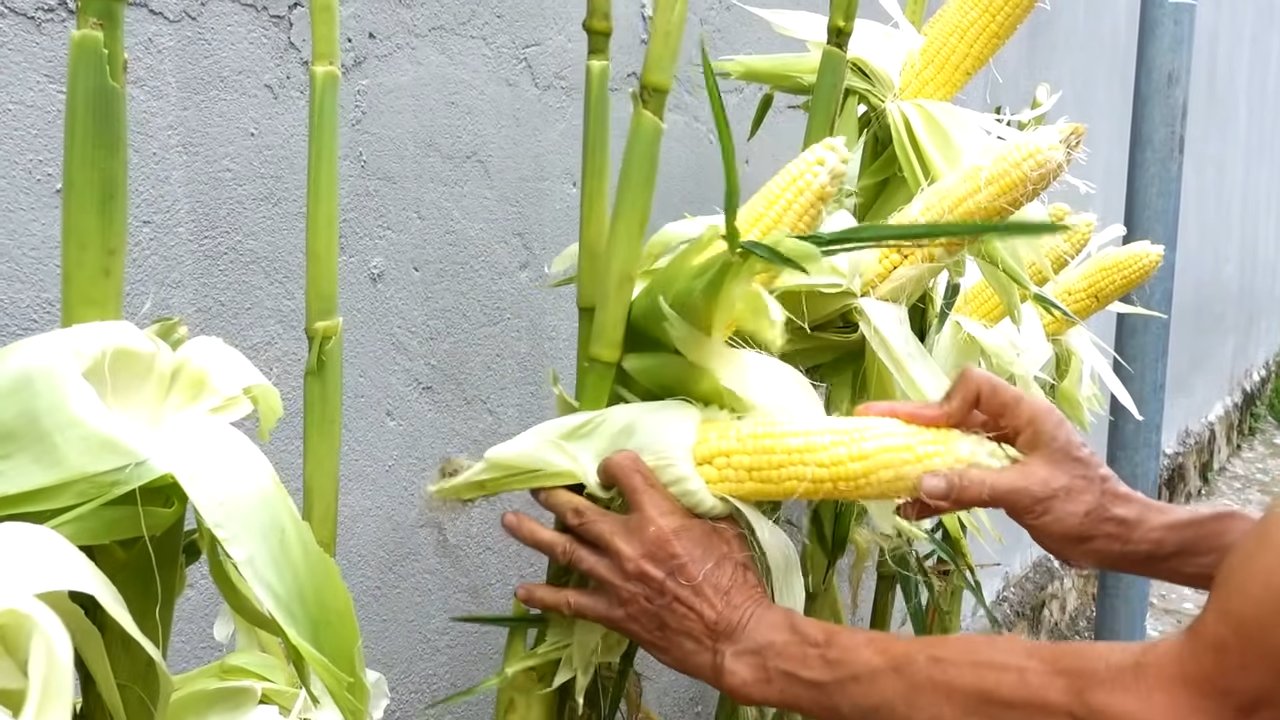
Concrete Corn-Growing: An Unusual DIY Project for Your Garden
Hey everyone! Have you ever thought about planting corn in concrete? Sounds crazy, right? But that’s exactly what we’re doing today! I’ll show you how to create a unique eye-catcher for your garden – concrete corn. It’s a fun, creative project that not only looks super cool but is also a great conversation starter. Let’s get started!
What You Need: The Materials List
Before we begin, here is a list of all the materials you will need for this project. Don’t worry, you probably already have most of them at home or can easily find them at the hardware store.
- Cement mix: I recommend a quick-drying cement mix so you don’t have to wait forever.
- Sand: Play sand or construction sand works great.
- Water: For the cement mix, of course!
- Corncobs: Fresh corncobs are ideal, but you can also use dried ones. Make sure they are in good condition.
- Vegetable oil or release agent: To prevent the concrete from sticking to the corncob.
- Bucket or mortar tub: For mixing the concrete.
- Spatula or trowel: For applying the concrete.
- Sandpaper (various grits): To smooth the concrete surface.
- Wire brush: To remove loose concrete residue.
- Paint (optional): Acrylic paints or concrete paint to paint your corncob.
- Brushes (optional): For applying the paint.
- Gloves: To protect your hands.
- Dust mask: When sanding the concrete.
- Safety glasses: Also when sanding.
- Containers or molds (optional): To stabilize the corncob while it dries.
- Clear coat or sealant (optional): To protect the paint and seal the concrete.
Step-by-Step Instructions: Here’s How It’s Done!
Now that we have everything, we can start the actual project. Don’t worry, it’s easier than it looks!
1. Preparing the Corncobs
- Cleaning: First, we need to prepare the corncobs. Remove all leaves and silks. If you are using dried corncobs, make sure they are clean and dry.
- Oiling: Now comes the important part: oiling. Apply a generous layer of vegetable oil or release agent to the entire surface of the corncob. This will prevent the concrete from sticking to the corncob and make it easier to remove later. I’ve found that two coats of oil are better than one!
- Let it dry: Let the oil soak in for a few minutes before moving on to the next step.
2. Mixing the Concrete
- Mixing: In a bucket or mortar tub, mix the cement mix, sand, and water according to the instructions on the package. I recommend starting with less water and adding it gradually until you reach a creamy but not too runny consistency. The concrete should not be too runny, otherwise it will run off the corncob.
- Check the consistency: The consistency is crucial. The concrete should be thick enough to adhere to the corncob, but also smooth enough to be easily workable. If it’s too dry, it will crumble; if it’s too runny, it will run off.
- Avoid lumps: Make sure there are no lumps in the concrete. These can cause problems later. Stir the concrete thoroughly until it has a uniform consistency.
3. Applying the Concrete
- First layer: With a spatula or trowel, apply a first layer of concrete to the corncob. Start at the bottom and work your way up. Make sure you cover the entire corncob evenly.
- Layer thickness: The first layer should not be too thick, about 1-2 cm. This helps to avoid cracks.
- Let it dry: Let the first layer dry for at least 24 hours. This is important so that the concrete can harden. Place the corncob in a container or mold while it dries to stabilize it.
4. Second Layer (optional)
- Check: After 24 hours, check if the first layer has dried sufficiently. It should be firm and hard.
- Apply a second layer: If the first layer is dry, you can apply a second layer of concrete. This layer can be a little thicker than the first, about 2-3 cm.
- Shaping: Use the second layer to refine the shape of the corncob. You can add small details with the spatula or trowel.
- Let it dry: Let the second layer also dry for at least 48 hours. The longer, the better!
5. Removing the Corncob
- Careful removal: After drying, comes the exciting part: removing the corncob. Be very careful not to damage the concrete.
- Twist and wiggle: Try to carefully twist and wiggle the corncob to loosen it from the concrete. Sometimes it helps to tap the concrete lightly.
- Patience: If the corncob doesn’t come out right away, be patient. Keep trying without using too much force.
- Tools (optional): If the corncob is very tight, you can carefully help with a knife or a screwdriver. Be careful not to scratch the concrete.
6. Sanding and Smoothing
- Sanding: Once the corncob is removed, you can start sanding. First, use coarse sandpaper (e.g., 80 grit) to remove any unevenness.
- Finer sandpaper: Then switch to finer sandpaper (e.g., 120 or 180 grit) to smooth the surface.
- Dust mask and goggles: Be sure to wear a dust mask and safety glasses when sanding to protect yourself from dust.
- Wire brush: Use a wire brush to remove any loose concrete residue.
- Cleaning: After sanding, clean the concrete corn thoroughly with water to remove the sanding dust.
7. Painting (optional)
- Primer (optional): If you want to paint your concrete corn, you can apply a primer first. This will ensure better adhesion of the paint.
- Apply paint: Apply the paint of your choice with a brush. Acrylic paints or special concrete paints are best.
- Multiple coats: Apply several coats of paint to achieve an opaque result. Let each coat dry well before applying the next.
- Creativity: Be creative! You can paint your concrete corn in all sorts of colors and patterns.
8. Sealing (optional)
Application: Apply the clear coat or sealer according to the instructions on the package.
Protection: To protect the paint and seal the concrete, you can apply a clear coat or a special concrete sealer.
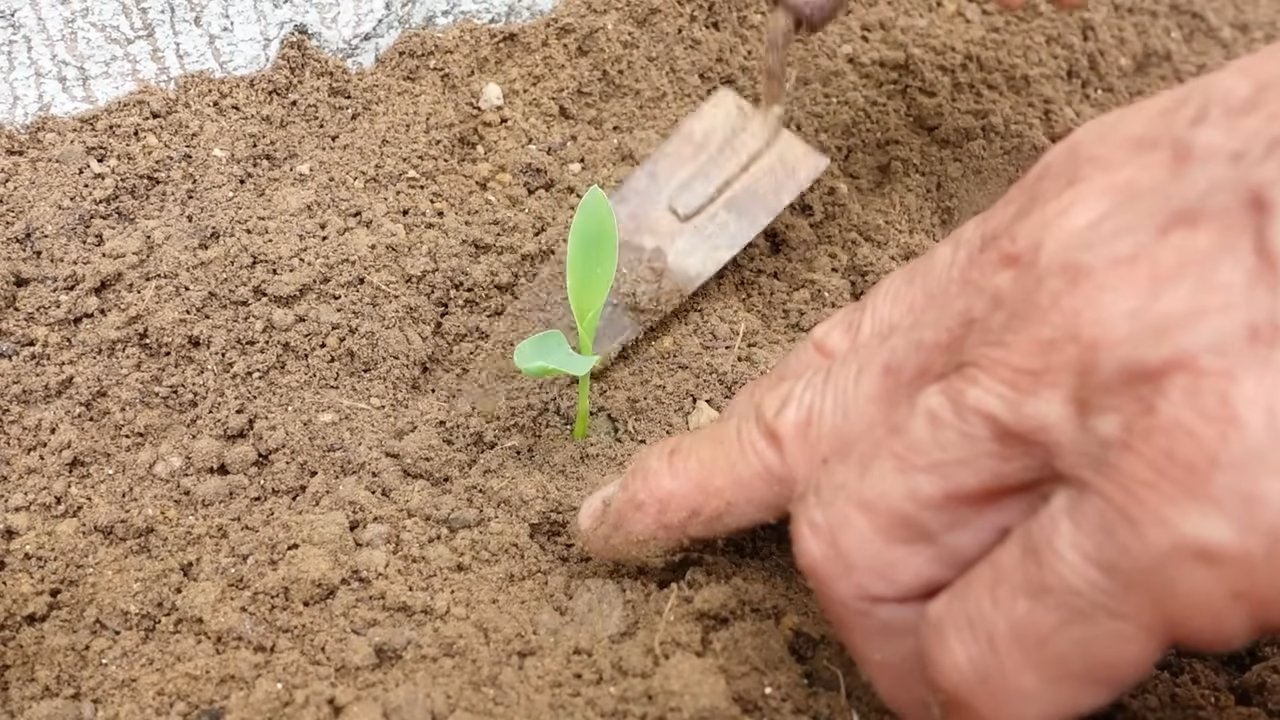
Conclusion
So, there you have it! Transforming concrete into a surprisingly effective medium for growing corn might sound unconventional, but as we’ve explored, it’s a viable and even advantageous method in certain situations. This DIY concrete corn growing technique isn’t just about defying expectations; it’s about resourcefulness, adaptability, and pushing the boundaries of what’s possible in urban gardening or areas with poor soil conditions.
Why is this a must-try? Firstly, it offers unparalleled control over the growing environment. You dictate the soil composition, drainage, and even temperature to some extent. This is particularly beneficial if you’re dealing with contaminated soil or simply lack access to fertile land. Secondly, the concrete itself acts as a thermal mass, absorbing heat during the day and releasing it slowly at night, which can extend the growing season and protect your corn from temperature fluctuations. Finally, it’s a fantastic conversation starter and a testament to your ingenuity as a gardener!
But don’t stop there! Experimentation is key. Consider these variations to tailor the method to your specific needs and climate:
* Vertical Concrete Corn Towers: Stack concrete blocks to create vertical towers, maximizing space in small areas. This also improves air circulation around the plants.
* Concrete Planters with Integrated Irrigation: Embed irrigation tubing within the concrete structure to create a self-watering system, reducing water waste and ensuring consistent moisture levels.
* Colored Concrete: Add pigments to the concrete mix to create visually appealing planters that complement your garden’s aesthetic.
* Companion Planting in Concrete: Incorporate companion plants like beans or squash into the same concrete planter to improve soil health and deter pests.
* Different Corn Varieties: While we’ve focused on standard sweet corn, try experimenting with other varieties like popcorn or ornamental corn to see how they perform in this unique environment.
We understand that venturing into uncharted territory can be daunting, but the rewards of this DIY project are well worth the effort. Imagine the satisfaction of harvesting plump, juicy ears of corn grown in a medium you created yourself!
We wholeheartedly encourage you to give this DIY concrete corn growing method a try. Don’t be afraid to adapt the techniques to suit your specific circumstances and preferences. The beauty of DIY is in the personalization and the learning process.
And most importantly, we want to hear about your experiences! Share your successes, challenges, and modifications in the comments section below. Let’s build a community of innovative gardeners who are pushing the boundaries of what’s possible. Your insights could inspire others to embrace this unconventional yet effective approach to growing corn. So, grab your trowel, mix your concrete, and get ready to harvest some homegrown goodness! Let us know how your concrete corn growing adventure unfolds!
Frequently Asked Questions (FAQ)
What type of concrete mix should I use?
A standard concrete mix, readily available at most hardware stores, will work perfectly fine for your concrete corn growing project. Look for a mix that’s designed for general-purpose use and contains a blend of cement, sand, and gravel. Avoid mixes that are specifically formulated for rapid setting, as they may not provide enough time to incorporate drainage holes or other modifications. You can also consider using a fiber-reinforced concrete mix for added durability and crack resistance, especially if you’re planning to build larger or more elaborate planters. Remember to follow the manufacturer’s instructions for mixing the concrete, ensuring that you achieve the correct consistency for optimal strength and workability.
How do I ensure proper drainage in my concrete planters?
Proper drainage is crucial for the success of your concrete corn growing endeavor. Corn plants are susceptible to root rot if they’re sitting in waterlogged soil. To ensure adequate drainage, you can incorporate several strategies:
* Drill Drainage Holes: Before the concrete fully sets, use a drill with a masonry bit to create several drainage holes in the bottom of the planter. The size and number of holes will depend on the size of the planter, but aim for at least four holes that are approximately 1/2 inch in diameter.
* Add a Layer of Gravel: Place a layer of gravel or crushed stone at the bottom of the planter before adding the soil mix. This will create a drainage layer that allows excess water to drain away from the roots.
* Use a Well-Draining Soil Mix: Choose a soil mix that’s specifically formulated for container gardening. These mixes typically contain ingredients like perlite or vermiculite, which improve drainage and aeration.
* Elevate the Planter: Place the planter on bricks or blocks to elevate it off the ground. This will allow water to drain freely from the drainage holes.
What type of soil mix is best for growing corn in concrete planters?
The ideal soil mix for growing corn in concrete planters should be well-draining, nutrient-rich, and capable of retaining moisture. A good starting point is a mix that consists of equal parts:
* Potting Soil: Provides a base for the mix and helps retain moisture.
* Compost: Adds essential nutrients and improves soil structure.
* Perlite or Vermiculite: Improves drainage and aeration.
You can also amend the soil mix with other ingredients to further enhance its properties. For example, adding bone meal can provide a slow-release source of phosphorus, which is essential for root development. Adding blood meal can provide a boost of nitrogen, which is important for leaf growth. Before planting, test the pH of the soil mix to ensure that it’s within the optimal range for corn (typically between 6.0 and 7.0).
How often should I water my concrete-grown corn?
The watering frequency for your concrete-grown corn will depend on several factors, including the weather, the size of the planter, and the type of soil mix you’re using. As a general rule, water deeply whenever the top inch of soil feels dry to the touch. Avoid overwatering, as this can lead to root rot. During hot, dry weather, you may need to water more frequently. Conversely, during cool, wet weather, you may need to water less frequently. A good way to check the moisture level of the soil is to insert your finger into the soil up to the first knuckle. If the soil feels dry, it’s time to water.
What kind of fertilizer should I use for concrete corn growing?
Corn is a heavy feeder, so it’s important to provide it with adequate nutrients throughout the growing season. You can use either a granular or liquid fertilizer, but make sure it’s specifically formulated for vegetables. A balanced fertilizer with an NPK ratio of 10-10-10 or 14-14-14 is a good starting point. Apply the fertilizer according to the manufacturer’s instructions, being careful not to over-fertilize, as this can burn the roots. You can also supplement with organic fertilizers like compost tea or fish emulsion. Side-dress the corn plants with fertilizer when they are about 12 inches tall and again when the tassels appear.
How do I protect my concrete-grown corn from pests and diseases?
While concrete planters can offer some protection from soilborne pests, your corn plants may still be susceptible to other pests and diseases. To minimize the risk, follow these tips:
* Choose Disease-Resistant Varieties: Select corn varieties that are known to be resistant to common diseases in your area.
* Practice Good Sanitation: Remove any dead or diseased leaves from the plants and keep the area around the planters clean.
* Monitor for Pests: Regular
So, there you have it! Transforming concrete into a surprisingly effective medium for growing corn might sound unconventional, but as we’ve explored, it’s a viable and even advantageous method in certain situations. This DIY concrete corn growing technique isn’t just about defying expectations; it’s about resourcefulness, adaptability, and pushing the boundaries of what’s possible in urban gardening or areas with poor soil conditions.
Why is this a must-try? Firstly, it offers unparalleled control over the growing environment. You dictate the soil composition, drainage, and even temperature to some extent. This is particularly beneficial if you’re dealing with contaminated soil or simply lack access to fertile land. Secondly, the concrete itself acts as a thermal mass, absorbing heat during the day and releasing it slowly at night, which can extend the growing season and protect your corn from temperature fluctuations. Finally, it’s a fantastic conversation starter and a testament to your ingenuity as a gardener!
But don’t stop there! Experimentation is key. Consider these variations to tailor the method to your specific needs and climate:
* Vertical Concrete Corn Towers: Stack concrete blocks to create vertical towers, maximizing space in small areas. This also improves air circulation around the plants.
* Concrete Planters with Integrated Irrigation: Embed irrigation tubing within the concrete structure to create a self-watering system, reducing water waste and ensuring consistent moisture levels.
* Colored Concrete: Add pigments to the concrete mix to create visually appealing planters that complement your garden’s aesthetic.
* Companion Planting in Concrete: Incorporate companion plants like beans or squash into the same concrete planter to improve soil health and deter pests.
* Different Corn Varieties: While we’ve focused on standard sweet corn, try experimenting with other varieties like popcorn or ornamental corn to see how they perform in this unique environment.
We understand that venturing into uncharted territory can be daunting, but the rewards of this DIY project are well worth the effort. Imagine the satisfaction of harvesting plump, juicy ears of corn grown in a medium you created yourself!
We wholeheartedly encourage you to give this DIY concrete corn growing method a try. Don’t be afraid to adapt the techniques to suit your specific circumstances and preferences. The beauty of DIY is in the personalization and the learning process.
And most importantly, we want to hear about your experiences! Share your successes, challenges, and modifications in the comments section below. Let’s build a community of innovative gardeners who are pushing the boundaries of what’s possible. Your insights could inspire others to embrace this unconventional yet effective approach to growing corn. So, grab your trowel, mix your concrete, and get ready to harvest some homegrown goodness! Let us know how your concrete corn growing adventure unfolds!
Frequently Asked Questions (FAQ)
What type of concrete mix should I use?
A standard concrete mix, readily available at most hardware stores, will work perfectly fine for your concrete corn growing project. Look for a mix that’s designed for general-purpose use and contains a blend of cement, sand, and gravel. Avoid mixes that are specifically formulated for rapid setting, as they may not provide enough time to incorporate drainage holes or other modifications. You can also consider using a fiber-reinforced concrete mix for added durability and crack resistance, especially if you’re planning to build larger or more elaborate planters. Remember to follow the manufacturer’s instructions for mixing the concrete, ensuring that you achieve the correct consistency for optimal strength and workability.
How do I ensure proper drainage in my concrete planters?
Proper drainage is crucial for the success of your concrete corn growing endeavor. Corn plants are susceptible to root rot if they’re sitting in waterlogged soil. To ensure adequate drainage, you can incorporate several strategies:
* Drill Drainage Holes: Before the concrete fully sets, use a drill with a masonry bit to create several drainage holes in the bottom of the planter. The size and number of holes will depend on the size of the planter, but aim for at least four holes that are approximately 1/2 inch in diameter.
* Add a Layer of Gravel: Place a layer of gravel or crushed stone at the bottom of the planter before adding the soil mix. This will create a drainage layer that allows excess water to drain away from the roots.
* Use a Well-Draining Soil Mix: Choose a soil mix that’s specifically formulated for container gardening. These mixes typically contain ingredients like perlite or vermiculite, which improve drainage and aeration.
* Elevate the Planter: Place the planter on bricks or blocks to elevate it off the ground. This will allow water to drain freely from the drainage holes.
What type of soil mix is best for growing corn in concrete planters?
The ideal soil mix for growing corn in concrete planters should be well-draining, nutrient-rich, and capable of retaining moisture. A good starting point is a mix that consists of equal parts:
* Potting Soil: Provides a base for the mix and helps retain moisture.
* Compost: Adds essential nutrients and improves soil structure.
* Perlite or Vermiculite: Improves drainage and aeration.
You can also amend the soil mix with other ingredients to further enhance its properties. For example, adding bone meal can provide a slow-release source of phosphorus, which is essential for root development. Adding blood meal can provide a boost of nitrogen, which is important for leaf growth. Before planting, test the pH of the soil mix to ensure that it’s within the optimal range for corn (typically between 6.0 and 7.0).
How often should I water my concrete-grown corn?
The watering frequency for your concrete-grown corn will depend on several factors, including the weather, the size of the planter, and the type of soil mix you’re using. As a general rule, water deeply whenever the top inch of soil feels dry to the touch. Avoid overwatering, as this can lead to root rot. During hot, dry weather, you may need to water more frequently. Conversely, during cool, wet weather, you may need to water less frequently. A good way to check the moisture level of the soil is to insert your finger into the soil up to the first knuckle. If the soil feels dry, it’s time to water.
What kind of fertilizer should I use for concrete corn growing?
Corn is a heavy feeder, so it’s important to provide it with adequate nutrients throughout the growing season. You can use either a granular or liquid fertilizer, but make sure it’s specifically formulated for vegetables. A balanced fertilizer with an NPK ratio of 10-10-10 or 14-14-14 is a good starting point. Apply the fertilizer according to the manufacturer’s instructions, being careful not to over-fertilize, as this can burn the roots. You can also supplement with organic fertilizers like compost tea or fish emulsion. Side-dress the corn plants with fertilizer when they are about 12 inches tall and again when the tassels appear.
How do I protect my concrete-grown corn from pests and diseases?
While concrete planters can offer some protection from soilborne pests, your corn plants may still be susceptible to other pests and diseases. To minimize the risk, follow these tips:
* Choose Disease-Resistant Varieties: Select corn varieties that are known to be resistant to common diseases in your area.
* Practice Good Sanitation: Remove any dead or diseased leaves from the plants and keep the area around the planters clean.
* Monitor for Pests: Regularly inspect your corn plants for signs of pests, such as aphids, corn earworms, or spider mites.
* Use Organic Pest Control Methods: If you find pests, try using organic pest control methods, such as insecticidal soap or neem oil.
* Provide Adequate Air Circulation: Ensure that your corn plants have adequate air circulation to prevent fungal diseases.
Can I grow corn in concrete planters in cold climates?
Yes, you can grow corn in concrete planters in cold climates, but you may need to take some extra precautions to protect the plants from frost and cold temperatures. The thermal mass of the concrete can actually be beneficial in cold climates, as it helps to retain heat and protect the roots from freezing. You can also use row covers or blankets to protect the plants from frost. If you live in an area with very cold winters, you may need to bring the planters indoors or move them to a sheltered location.
How long does it take to grow corn in concrete planters?
The time it takes to grow corn in concrete planters will depend on the variety of corn you’re growing, the climate, and the growing conditions. Generally, it takes about 60 to 100 days from planting to harvest. Sweet corn varieties typically mature faster than other types of corn. You’ll know the corn is ready to harvest when the silks turn brown and dry and the kernels are plump and milky.
Can I reuse the concrete planters for other plants after harvesting the corn?
Absolutely! Once you’ve harvested your corn, you can reuse the concrete planters for other plants. Simply remove the old soil mix, clean the planters thoroughly, and refill them with fresh soil. Concrete planters are durable and can last for many years, making them a sustainable and cost-effective option for gardening. You can grow a wide variety of vegetables, herbs,


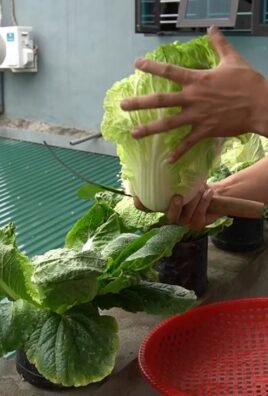
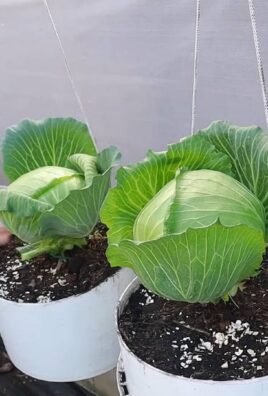
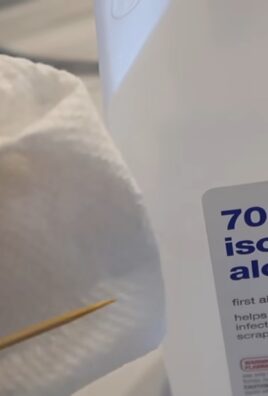
Leave a Comment